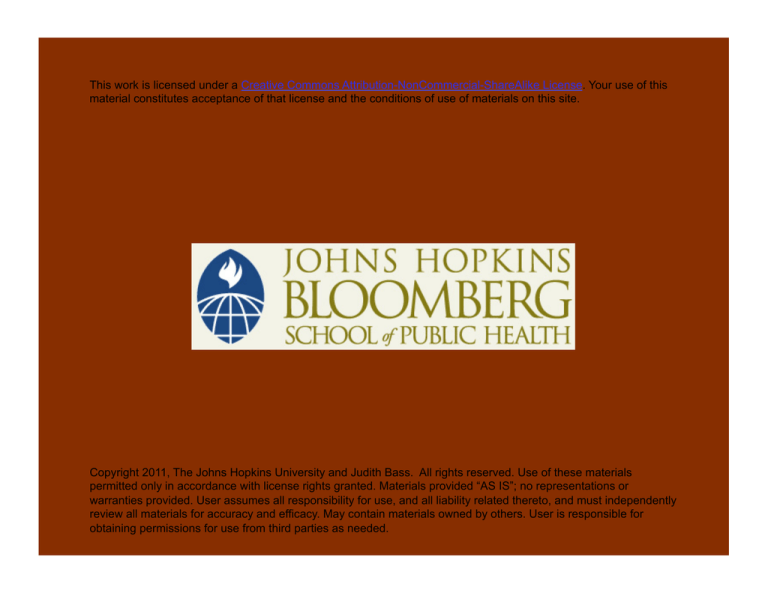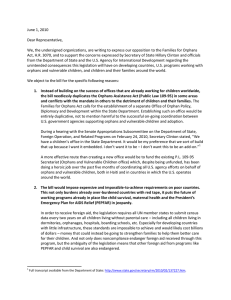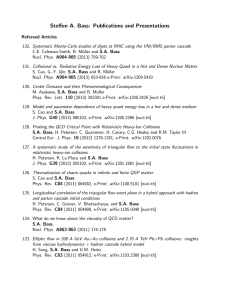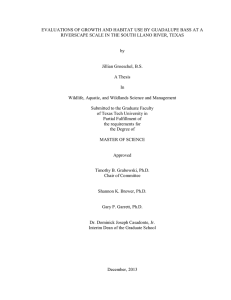
This work is licensed under a Creative Commons Attribution-NonCommercial-ShareAlike License. Your use of this
material constitutes acceptance of that license and the conditions of use of materials on this site.
Copyright 2011, The Johns Hopkins University and Judith Bass. All rights reserved. Use of these materials
permitted only in accordance with license rights granted. Materials provided “AS IS”; no representations or
warranties provided. User assumes all responsibility for use, and all liability related thereto, and must independently
review all materials for accuracy and efficacy. May contain materials owned by others. User is responsible for
obtaining permissions for use from third parties as needed.
Vulnerable Populations
Judy Bass, MPH, PhD
Johns Hopkins University
Class Objectives
Be able to ...
- Recognize the factors that are associated with vulnerability
-
Understand how vulnerabilities can lead to psychosocial and
mental health problems
-
Discuss the ethical implications of working with vulnerable
populations
3
Section A
Defining Vulnerability
Definitions of Vulnerability
Situational
- Lack capacity for self-protection
Process
- Likelihood of exposure to a hazard and being adversely effected
5
Vulnerable Populations
Pregnant single women
Widows
Older adults
People with mental illness
Orphans and unaccompanied minors
Children with special needs
Photo by daveblume. Creative Commons BY-NC-ND. Retrieved from
http://www.flickr.com/photos/kioko/3045613115/sizes/z/
6
Vulnerabilities
Poverty—lack of financial
support systems
Health and nutrition problems
Lack of social support and
displacement
Family disruption/separation/
loss
Lack of education
Lack of protection
Photo by Judy Bass
7
Vulnerabilities of Orphans and Unaccompanied Minors
Being reared without adults
- Lack of supervision and care
-
Lack education
-
Low skills and lack social
competencies
-
Few chances for future success
Experience discrimination and violence
-
-
Lack of adult role models
Increased risk for injuries
Mental health problems
Substance abuse and sexual
exploitation
Photo by Judy Bass
8
Mental Health and Psychosocial Effects
Immediate situation
- Depression and anxiety problems
-
Behavior problems
Long-term repercussions
- Substance abuse, violence, suicide
- Developmental milestones missed
- Skills for well-being not established
9
Coping and Resiliency
Children do survive, and some thrive
- Develop support networks
-
-
-
Share resources and protective care
Develop ability to withstand adversity
Gain entrepreneurial skills
10







